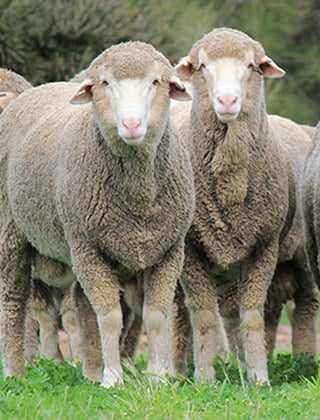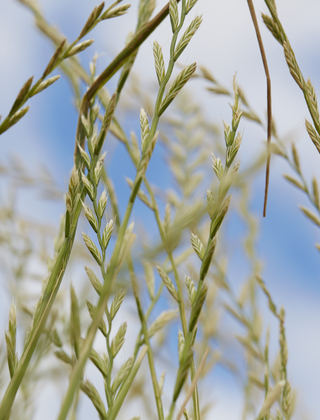Australian Wool Production Forecast Report August 2018
The Australian Wool Production Forecasting Committee’s updated forecast of shorn wool production in 2018/19 is 322 mkg greasy, down by 5.7% from 2017/18. The continuing dry conditions across most of the country has resulted in high sheep and lamb turn-off in 2017/18 (+10%). This combined with the current tough seasonal conditions are expected to lead to a lower number of sheep to be shorn in 2018/19 and a reduction in average wool cut per head. The Committee estimates that Australian shorn wool production in 2017/18 was 341 mkg greasy. This is 0.3% higher than the estimated level for 2016/17 and higher than the Committee’s forecast in April. It reflects an increase in the number of sheep shorn (+3.3%) last season compared to 2016/17, which is mostly offset by an estimated 2.9% decline in average fleece weights.
- The Australian Wool Production Forecasting Committee’s updated forecast of shorn wool production in 2018/19 is 322 mkg greasy, down by 5.7% from 2017/18. The continuing dry conditions across most of the country has resulted in high sheep and lamb turn-off in 2017/18 (+10%). This combined with the current tough seasonal conditions are expected to lead to a lower number of sheep to be shorn in 2018/19 and a reduction in average wool cut per head.
- The Committee estimates that Australian shorn wool production in 2017/18 was 341 mkg greasy. This is 0.3% higher than the estimated level for 2016/17 and higher than the Committee’s forecast in April. It reflects an increase in the number of sheep shorn (+3.3%) last season compared to 2016/17, which is mostly offset by an estimated 2.9% decline in average fleece weights.
The Australian Wool Production Forecasting Committee has updated its forecast for the 2018/19 season to 322 mkg greasy. This is a 5.7% decline on the Committee’s shorn wool production estimate of 341 mkg greasy for the 2017/18 season. The fall reflects an expected reduction in both the number of sheep shorn and average wool cuts per head as a result of the dry seasonal conditions across most of the country.
Committee Chairman, Russell Pattinson said that, "adverse seasonal conditions in many sheep producing areas across Australia have resulted in a high turn-off of sheep and lambs. It will also mean lower average fleece weights in several states.” The impact of the season can be seen through a 10% increase in sheep and lamb turn-off last season compared to 2016/17 (sheep 28% increase year-on-year and lamb 5% increase).
Mr Pattinson said, “The Committee’s first forecast for the 2018/19 season made in April at 333 mkg assumed that normal seasonal conditions would prevail. That has obviously not been the case with conditions worsening in many wool producing regions across Australia”. As a result, wool production is expected to fall in all states except Tasmania with the largest reductions expected in NSW (down 8.9%) and South Australia (down 6.0%). How the season progresses over the next couple of months will be very important for overall production levels this season.
The Committee estimates that shorn wool production for 2017/18 was 341 million kilograms greasy, a 0.3% increase in production compared to 2016/17.
The dry seasonal conditions over much of the second half of the season resulted in lower than expected fleece weights in 2017/18. Wool production reductions were greatest in WA (down 8.5%) and Queensland (down 3.0%), while Victoria showed the largest increase (+ 8.9%) with increases also in SA (+2.7%) and Tasmania (+1.5%).
The estimated 0.3% increase in production in 2017/18 is consistent with AWTA test weight data for the season (+0.6%) and AWEX first-hand offerings (+2.2%).
AWTA test data for 2017/18 by micron showed reductions in weight of wool tested between 19.6 and 24.5 micron (down 11.3%) while there was an increase in weight of wool tested between 16.6 and 19.5 micron (+11.7%) as well as over 26.6 micron (+11.7%). Production of wool 16.5 micron and finer fell by 10% last season.
| Table 1: Summary of wool production estimates and forecasts for Australia | |||||
| Parameter | 2016/17 Final Estimate |
2017/18 Final Estimate |
Change y-o-y (%) | 2018/19 Third Forecast |
Change y-o-y (%) |
| Sheep numbers shorn (million head) |
74.3 | 76.8 | +3.3% | 74.3 | -3.2% |
| Average cut per head (kg/head) |
4.58 | 4.45 | -2.9% | 4.33 | -2.6% |
| Shorn wool production (mkg greasy) |
340 | 341 | +0.3% | 322 | -5.7% |
| Note: Totals may not add due to rounding | |||||
| Table 2: Total shorn wool production by State - 2016/17, 2017/18 and 2018/19 | |||||||
| mkg greasy | NSW | VIC | WA | SA | TAS | QLD | National |
| 2016/17 Final Estimate (mkg) | 126.0 | 67.4 | 71.1 | 57.8 | 9.2 | 8.5 | 340 |
| 2017/18 Final Estimate (mkg) | 125.7 | 73.5 | 65.1 | 59.5 | 9.3 | 8.3 | 341 |
| Change y-o-y % | -0.3% | +8.9% | -8.5% | +2.7% | +1.5% | -3.0% | +0.3% |
| 2018/19 Third Forecast(mkg) | 114.5 | 71.7 | 63.2 | 55.9 | 9.5 | 7.2 | 322 |
| Change y-o-y % | -8.9% | -2.4% | -3.0% | -6.0% | -1.2% | -13.6% | -5.7% |
| Note: Totals may not add due to rounding | |||||||
The National Committee drew on advice from the six State Committees, each of which includes growers, brokers, private treaty merchants, representatives from State Departments of Agriculture, and the Australian Wool Testing Authority. Data and input was also drawn from AWEX, wool exporters, the Australian Bureau of Statistics, ABARES, AWTA and Meat and Livestock Australia.















